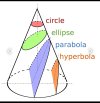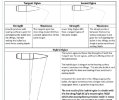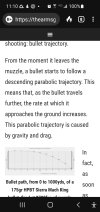RockyMtnMT
Official LRH Sponsor
Thank you sir. The reason that I posed the question was because another member here stated that parabolic drag was induced by mono bullets due to their lower material density. I had never heard of such a thing and when I asked for clarification in the thread I was being told that I was out of line, for lack of better terms, so I started this thread to see if there was even such a thing. I now know that it has nothing to do with bullets let alone what they are made of. I posted the correction, and that went about as well as asking for clarification.Steve,
Simply put, the link you shared is describing the relationship between lift and drag for an airfoil over a range of angles of attack; the relationship is parabolic. That is, as angle of attack goes up from zero, lift increased faster than drag for a short time, then drag starts to increase much more quickly than lift. Instead of plotting lift against angle of attack and then drag against angle of attack, they plotted lift and drag (coefficients) against one another, which is much less intuitive to follow.
Try it for yourself if you like: put your open hand out the window of your car while driving, and hold it flat. You feel a little bit of drag and no lift. Now start rotating your thumb upwards relative to your pinkie finger. At first you start to feel your hand want to rise (lift), with only a little more force backwards (drag). By the time you get your palm facing into the wind, your hand is producing only drag, with no lift. The relationship of lift to drag you just felt is parabolic - once you rotated your hand too far, it slowly stopped producing more lift and rapidly started producing more drag.
Hope that made sense and helps. While drag is obviously important to bullets, we generally are not trying to produce lift, so this topic may not be especially relevant to your goals as a bullet maker...
Appreciate the help.



